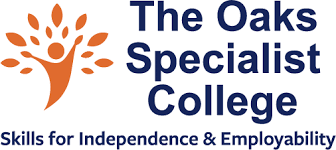
Max is a TikTok star: 90,000 followers and counting. This was so motivating for him that he became our first learner to use the Flip app as part of his Speech and Language programme. Instead of practising a list of words to help his diction, Max and his peers use Flip and practise speech sounds in context, more frequently and more independently. No need for feedback from another person, he can track his own progress through the videos he has created. The impact has been incredible.
The 112 learners at The Oaks Specialist College in Tonbridge have a range of learning disabilities which affect them in different ways. They also have a variety of strengths, aspirations and motivations and we want them to live purposeful, fulfilling lives as independently as possible. Every approach, whether educational, community based or towards transition is always personalised. Our approach to assistive and accessible technology is no different.
Daily life in 2023
Our reliance on mobile technologies has expanded in the last decade:
- In 2021, 88% of UK adults were using a smartphone on a regular basis compared with 17% in 2008
- In 2021, 69% of 18-24 year olds had a smartphone
- In 2023, the number of active mobile connections in the UK totals 71.8 million (4.4 million more than the UK total population).
The world our young people will inhabit when they leave education is a vastly different landscape from the one encountered by their parents.
What do you use your smartphone for? Probably making a phone call was way down your list. For better or worse, phones have infiltrated most areas of daily life for adults in the UK.
My day is fairly typical of the average 40-year-old. I am woken by the alarm set on my phone, check the time displayed on the screen. I briefly scroll through my sleeping activity which has been tracked on my smartwatch as I slept. Whilst brushing my teeth I check the news to see what had changed in the world and leave the house, where my phone connects to my car so I can listen and be in touch as I drive. It helps me to take the quickest route to work, because my SatNav finds a route that will avoid traffic.